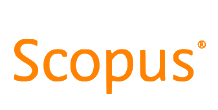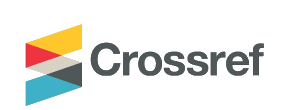Value-adding to health professional student placement experiences: Enhancing work readiness and employability through a rural community engagement program
DOI:
https://doi.org/10.21153/jtlge2018vol9no1art698Keywords:
graduate attributes, rural health, undergraduate education, workforce, work integrated learning, professional placementsAbstract
Enriching health professional students’ placement experiences through targeted community-engagement has the potential to help develop their preparedness to provide healthcare to the broader community. The program, developed in 2011, consisted of short, extracurricular community-engaged learning experiences integrated with the students’ professional placements. The aim of this study was to investigate whether the program was adding to the students’ rural health placement experiences based on perceptions of both the students themselves and UONDRH staff.
A mixed methods approach used a student survey (n = 96), which included both closed and open-ended questions, and semi-structured interviews with staff members involved in delivery of the community engagement program (n = 15). Data were explored together for intersections and commonalities. The overarching key concept was ‘Enhancing Work Readiness and Employability’. Both student and staff perceived that students’ participation in community engagement improved their employment prospects. Three themes that emerged from the data, which underpinned and supported the key concept. They were: ‘Expanding professional practice capabilities’; ‘Building confidence and showing motivation’ and ‘Better understanding the nature of rural practice’,
The results of this study provide support to the notion that there was value for students in this form of short-term, community engagement activities, many of which could be readily integrated into existing health professional education programs with considerable benefits. . It would also lend itself to other non-health professional programs, such as law, journalism or business studies, as a means of broadening the students’ perspectives beyond the limits of their own professional horizons.
References
References
Artess, J., Forbes, P., & Ripmeester, N. (2011). Supporting graduate employability: HEI practice in other countries. Retrieved from London,:
Australia Government Department of Education, T. a. Y. A. (2000).
Evaluations and Investigations Programme (EIP). Employer satisfaction with graduate skills: Research report. . Retrieved from Canberra: http://www.voced.edu.au/content/ngv%3A13863
Australian Institute of Health and Welfare (AIHW). (2014). Australia's Health. Retrieved from Canberra:
Baum, H. S. (2000). Fantasies and realities in university-community partnerships. Journal of Planning Education and Research, 20(2), 234-246.
Billett, S. (2012). Practice-based learning and professional education: pursuing quality outcomes and sustainability. In J. Higgs, R. Barnett, S.
Billett, M. Hutchings, & F. Trede (Eds.), Practice-based education: Perspectives and strategies (pp. 101-102). Rotterdam, The Netherlands: Sense Publishers.
Boelen, C., & Woollard, B. (2009). Social accountability and accreditation: a new frontier for educational institutions. Med Education, 43(9), 887-894. doi:10.1111/j.1365-2923.2009.03413.x
Bringle, R. G., & Hatcher, J. A. (2002). Campus–Community Partnerships: The Terms of Engagement. Journal of Social Issues, 58(3), 503-516. doi:10.1111/1540-4560.00273
Browne, A. J., & Varcoe, C. (2006). Critical cultural perspectives and health care involving Aboriginal peoples. Contemp Nurse, 22(2), 155-167. doi:10.5555/conu.2006.22.2.155
Butin, D. W. (2010). Service-learning in theory and practice: The future of community engagement in higher education. In.
Buykx, P., Humphreys, J., Wakerman, J., & Pashen, D. (2010). Systematic review of effective retention incentives for health workers in rural and remote areas: towards evidence-based policy. Aust J Rural Health, 18(3), 102-109. doi:10.1111/j.1440-1584.2010.01139.x
Caballero, C., & Walker, A. (2010). Work readiness in graduate recruitment and selection: a review of current assessment methods. Journal of Teaching and Learning for Graduate Employability, 1(1), 13-25.
Caballero, C., Walker, A., & Fuller-Tyszkiewicz. (2011). The work readiness scale (WRS): developing a measure to assess work readiness in college graduates. Journal of Teaching and Learning for Graduate Employability, 2(2), 41-54.
Cashman, S. B., & Seifer, S. D. (2008). Service learning: an integral part of undergraduate public health. American Journal of Preventive Medicine, 35(3), 273-278.
Clark, G., Marsden, R., Whyatt, J. D., Thompson, L., & Walker, M. (2015). ‘It’s everything else you do…’: Alumni views on extracurricular activities and employability. Active Learning in Higher Education, 1469787415574050.
Deeley, S. J. (2014). Summative co-assessment: a deep learning approach to enhancing employability skills and attributes. Active Learning in Higher Education, 15(1), 39-51.
Ferman, B., & Hill, T. L. (2004). The Challenges of Agenda Conflict in Higher‐Education‐Community Research Partnerships: Views from the Community Side. Journal of Urban Affairs, 26(2), 241-257. doi:10.1111/j.0735-2166.2004.00199.x
Freire, P. (1996). Pedagogy of the oppressed (revised). New York: Continuum.
Furlong, D., Clews, R., & Randall, W. (2009). From Vision to Voice: Rural Helping as Listening to the Tales that Teach. Atlantic Universities’ Teaching Showcase, 29.
Furze, J., Black, L., Peck, K., & Jensen, G. M. (2011). Student perceptions of a community engagement experience: Exploration of reflections on social responsibility and professional formation. Physiotherapy Theory and Practice, 27(6), 411-421.
Hager, P., & Holland, S. (2006). Graduate Attributes, Learning and Employability. Springer, The Netherlands. Dordrecht: Springer Netherlands.
Higgs, J., Barnett, R., Billett, S., Hutchings, M., & Trede, F. (2012). Practice-based education:Perspectives and strategies. Rotterdam, The Netherland: Sense.
Humphreys, J., Wakerman, J., Wells, R., Kuipers, P., Jones, J., & Entwistle, P. (2008). ``Beyond Workforce'': A Systemic Solution for Health Service Provision in Small Rural and Remote Communities. Medical Journal of Australia, 188(8), 77.
IBM Corporation. (2013). IBM SPSS Statistics for Windows,. Armonk, New York: IBM Corp.
Jones, D., McAllister, L., & Lyle, D. (2016). Community-based service-learning: A rural Australian perspective on student and academic outcomes of participation. The International Journal of Research on Service-Learning and Community Engagement, 4(1).
Joyce, C., McDonald, H., & Lawlor-Smith, L. (2016). General practitioners’ perceptions of different practice models: a qualitative study. Australian journal of primary health, 22(5), 388-393.
Joyce, C., & Wolfe, R. (2005). Geographic distribution of the Australian primary health workforce in 1996 and 2001. Australian and New Zealand Journal of Public Health, 29(2), 129-135. doi:10.1111/j.1467-842X.2005.tb00062.x
Kolb, D. A. (2014). Experiential learning: Experience as the source of learning and development: FT press.
Lyle, D., Klineberg, I., Taylor, S., Jolly, N., Fuller, J., & Canalese, J. (2007). Harnessing a University to address rural health workforce shortages in Australia. Australian Journal of Rural Health, 15(4), 227-233.
Malatzky, C., & Bourke, L. (2017). When the social meets health in rural Australia: confronting the disconnect. Health Sociology Review, 26(2), 190-203. doi:10.1080/14461242.2016.1275978
Marullo, S., & Edwards, B. (2000). From charity to justice: the potential of university-community collaboration for social change. American Behavioural Scientist, 43(5), 895-912.
Mason, J. (2013). Review of Australian Government health workforce programs Retrieved from http://www.health.gov.au/internet/main/publishing.nsf/Content/review-australian-government-health-workforce-programs
McGrail, M. R., Humphreys, J. S., Joyce, C. M., Scott, A., & Kalb, G. (2012). How do rural GPs’ workloads and work activities differ with community size compared with metropolitan practice? Australian journal of primary health, 18(3), 228-233.
Messum, D., Wilkes, L., & Jackson, D. (2015). What employability skills are required of new health managers?
Millican, J., Bourner, T., Millican, J., & Bourner, T. (2011). Student-community engagement and the changing role and context of higher education. Education+ Training, 53(2/3), 89-99.
O’Leary, S. (2013). Collaborations in higher education with employers and their influence on graduate employability: An institutional project. . Enhancing Learning in the Social Sciences, 5(1), 37-50.
Oprean, C. (2007). Adequately responding to “reform” and “anti‐reform” pressures in the Romanian higher education system under the Bologna Process. Higher Education in Europe, 32(1), 91-97.
Prout, S., Lin, I., Nattabi, B., & Green, C. (2014). ‘I could never have learned this in a lecture’: transformative learning in rural health education. Advances in Health Sciences Education, 19(2), 147-159.
Qenani, E., MacDougall, N., & Sexton, C. (2014). An empirical study of self-perceived employability: Improving the prospects for student employment success in an uncertain environment. Active Learning in Higher Education, 15(3), 199-213. doi:10.1177/1469787414544875
QSR International Pty Ltd. (2012). NVivo qualitative data analysis Software.
Smith, T. (2014). Health Education and Practice Relationships in a Rural Context. In J. Higgs, A. Croker, D. Tasker, J. Hummell, & N. Patton (Eds.),
Health Practice Relationships (pp. 161-170). Rotterdam: SensePublishers.
Stanton, T. K., Giles Jr, D. E., & Cruz, N. I. (1999). Service-Learning: A Movement's Pioneers Reflect on Its Origins, Practice, and Future. Jossey-Bass Higher and Adult Education Series: ERIC.
Thompson, L. J., Clark, G., Walker, M., & Whyatt, J. D. (2013). ‘It’s just like an extra string to your bow’: Exploring higher education students’ perceptions and experiences of extracurricular activity and employability. Active Learning in Higher Education, 14(2), 135-147.
Thune, T., Støren, L. A., & McCracken, M. (2015). Study and labour market effects of graduate students’ interaction with work organisations during education: a cohort study. Education+ Training, 57(7).
Universities Australia. (2015). Keep it Clever: Policy Statement Retrieved from Canberra: https://www.universitiesaustralia.edu.au/news/policy-papers/Keep-it-Clever--Policy-Statement-2016#.V7Otjnqu9cU
Universities Australia, Australian Chamber of Commerce and Industry, Australian Industry Group, Business Council of Australia, & Australian Collaborative Education Network. (2015). National strategy on work integrated learning in university education. Retrieved from Deakin:
Vaismoradi, M., Turunen, H., & Bondas, T. (2013). Content analysis and thematic analysis: Implications for conducting a qualitative descriptive study. Nursing and Health Sciences, 15(3), 398-405. doi:https://dx.doi.org/10.1111/nhs.12048
Wakerman, J., & Humphreys, J. S. (2012). Sustainable workforce and sustainable health systems for rural and remote Australia. The Medical Journal of Australia, 1(3), S14-S17.
Walker, A., Storey, K. M., Costa, B. M., & Leung, R. K. (2015). Refinement and validation of the Work Readiness Scale for graduate nurses. Nursing outlook.
Walker, A., Yong, M., Pang, L., Fullarton, C., Costa, B., & Dunning, T. (2013). Work readiness of graduate health professionals. Nurse Education Today, 33, 116-122.











